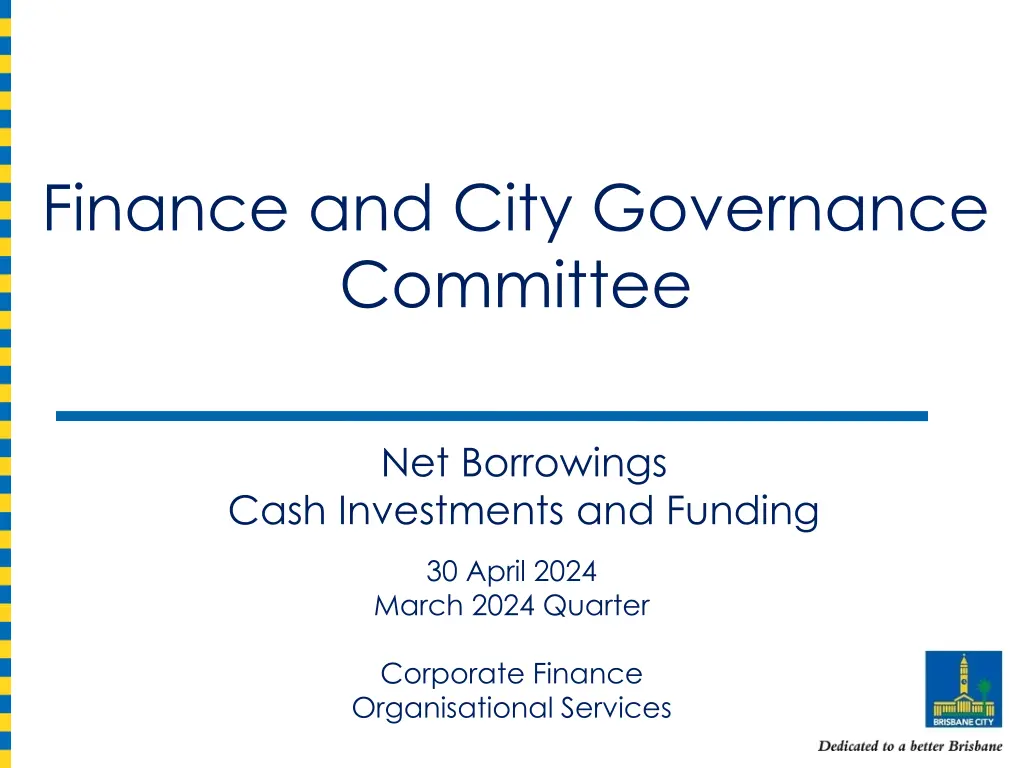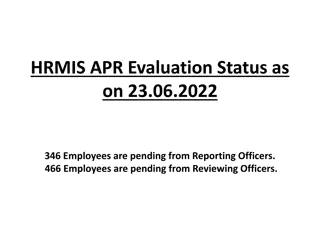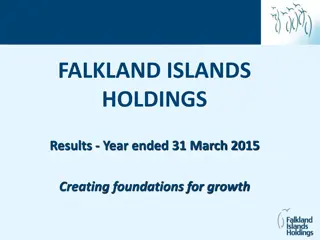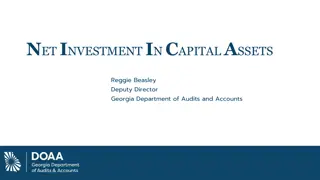
Economic Insights and Outlook 2024
Gain valuable insights into the global and domestic economy for 2024, including GDP growth forecasts, inflation trends, employment rates, and market analysis. Explore the latest data from organizations like the OECD and RBA to stay informed on key economic indicators.
Download Presentation

Please find below an Image/Link to download the presentation.
The content on the website is provided AS IS for your information and personal use only. It may not be sold, licensed, or shared on other websites without obtaining consent from the author. If you encounter any issues during the download, it is possible that the publisher has removed the file from their server.
You are allowed to download the files provided on this website for personal or commercial use, subject to the condition that they are used lawfully. All files are the property of their respective owners.
The content on the website is provided AS IS for your information and personal use only. It may not be sold, licensed, or shared on other websites without obtaining consent from the author.
E N D
Presentation Transcript
Finance and City Governance Committee Net Borrowings Cash Investments and Funding 30 April 2024 March 2024 Quarter Corporate Finance Organisational Services
Global Economy Outlook OECD Forecast Real GDP Growth Projections 2023 2024 2025 The Organisation for Economic Co- operation and Development s (OECD) forecasts that global growth will soften to 2.9% in 2024 (down from 3.1% in 2023 and 3.3% in 2022). World 3.1 2.9 3.0 Australia 2.0 1.4 2.1 China 5.2 4.7 4.2 Euro Area 0.5 0.6 1.3 United Kingdom 0.3 0.7 1.2 United States 2.5 2.1 1.7 Source: OECD Economic Outlook February 2024 The global economy continues to face the key risks of elevated inflation and escalating geopolitical tensions and the potential impact on energy and commodity markets. Global Headline Inflation vs Supply Chain Pressures Global headline inflation is forecast to moderate further over 2024-25, but to remain above the pre-pandemic average.
Domestic Economy Outlook Australian GDP growth continues to slow, recording 0.2% in the quarter and 1.5% at year ended December 2023. The result was largely driven by weak consumer spending with consumption per person falling in Australia. With retail sales recording soft growth of 1.6% over the year to February 2024. The RBA forecast of GDP growth has been revised down to 1.8% in 2024 (from 2.0% the November 2023 forecast) and is expected to lift to 2.3% in 2025.
Domestic Economy Inflation CPI increased by 3.6% in the year to March 2024, moderating from the high of 7.8% recorded in December 2022. Goods inflation continued its decline to 3.1%, whilst services inflation has been slower to moderate, recording 4.3% in March 2024. Goods and Services Inflation The RBA expects inflation to moderate, lowering to 3.2% over 2024 (down from a prior forecast of 3.5%), and to 2.8% by end of 2025.
Domestic Economy Employment Unemployment and Participation Rate The labour market is remaining resilient to a weakening economy recording 3.7% in February 2024 (remaining near the recent multi-decade low of 3.5%). The RBA expects the labour market to ease across 2024, with unemployment forecast to rise to 4.3% by the end of the year. Australia Population Australia s population grew 2.5% in the year to September 2023.
Domestic Economy Markets The AUD/USD at 28 March 2024 was 0.65. Commodity markets have softened since the start of 2024, with a broad index of Australian commodities dropping 7%. Australian commodities are expected to continue to soften over 2024. Key risk to this outlook include escalating geopolitical tensions and its potential impact on energy and commodity markets.
Interest Rates Outlook The RBA Board held the cash rate at 4.35% at the March 2024 board meeting. The decision noted that inflation is moderating but remains high. The RBA s February Statement on Monetary Policy assumes the cash rate will fall to 3.9% by December 2024 and to 3.4% by the end of 2025. 10-year Government bond rates are slightly below recent highs, recording 3.98% at the end of March 2024.
Queensland Outlook Queensland Final Demand Queensland s economy grew 0.6% in the final quarter, growing a total of 2.3% over 2023. Driven by public and investment spending, with consumption and housing spending contracting over the year. Queensland recorded population growth of 2.7% in the year to September 2023, on the back of strong net overseas migration. Queensland s unemployment rate was 4.0% in February 2024, close to the cyclical low of 3.5% recorded in 2022.
Funding Capability Mar-23 Jun-23 Sep-23 Dec-23 Mar-24 QTC Cash Fund CBA Transaction Account At Call & Term Deposits Total Council Investments $80,000 $14,205 $294,000 $388,205 $36,000 $35,575 $221,255 $23,354 $50,000 $294,609 $50,000 $18,149 $85,000 $53,006 $0 $0 $0 $71,575 $68,149 $138,006 Unused Borrowing Capacity Unused Working Capital Facility Unused Variable Rate Facility Unused Bank Overdraft Unused Funding Capability $326,000 $550,000 $250,000 $5,000 $1,131,000 $0 $0 $395,000 $330,000 $250,000 $5,000 $980,000 $395,000 $105,000 $250,000 $5,000 $755,000 $550,000 $250,000 $5,000 $805,000 $400,000 $250,000 $5,000 $655,000 Total Funding Capability $1,519,205 $876,575 $949,609 $1,048,149 $893,006 Total Drawn Borrowings Add: Unused Funding Capability $2,334,511 $1,131,000 $2,462,110 $805,000 $2,587,800 $655,000 $2,414,135 $980,000 $2,830,391 $755,000 Total Debt Capability $3,465,511 $3,267,110 $3,242,800 $3,394,135 $3,585,391 Total Council Investments Net Borrowings Total Funding Capability / Total Debt Capability $388,205 $1,946,306 43.8% $71,575 $2,390,535 26.8% $294,609 $2,293,192 29.3% $68,149 $2,345,986 30.9% $138,006 $2,692,385 24.9%






















